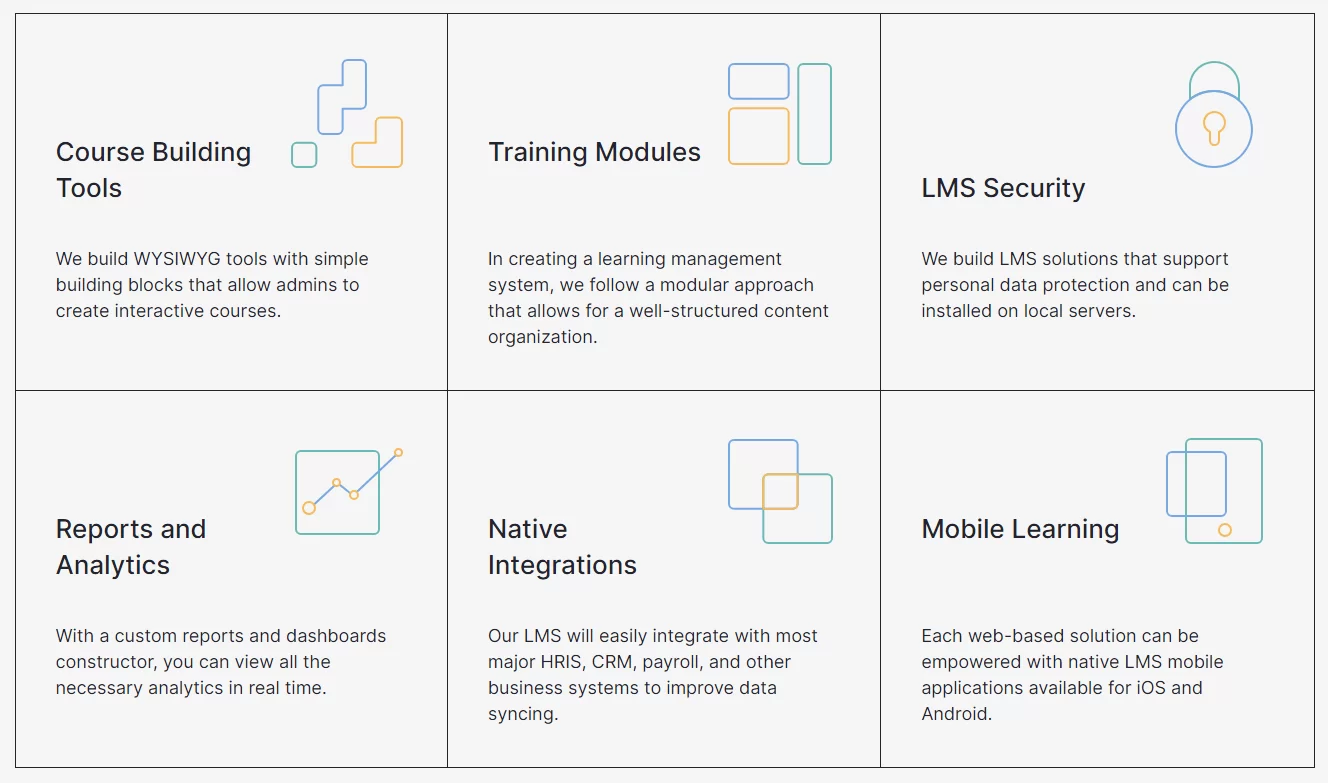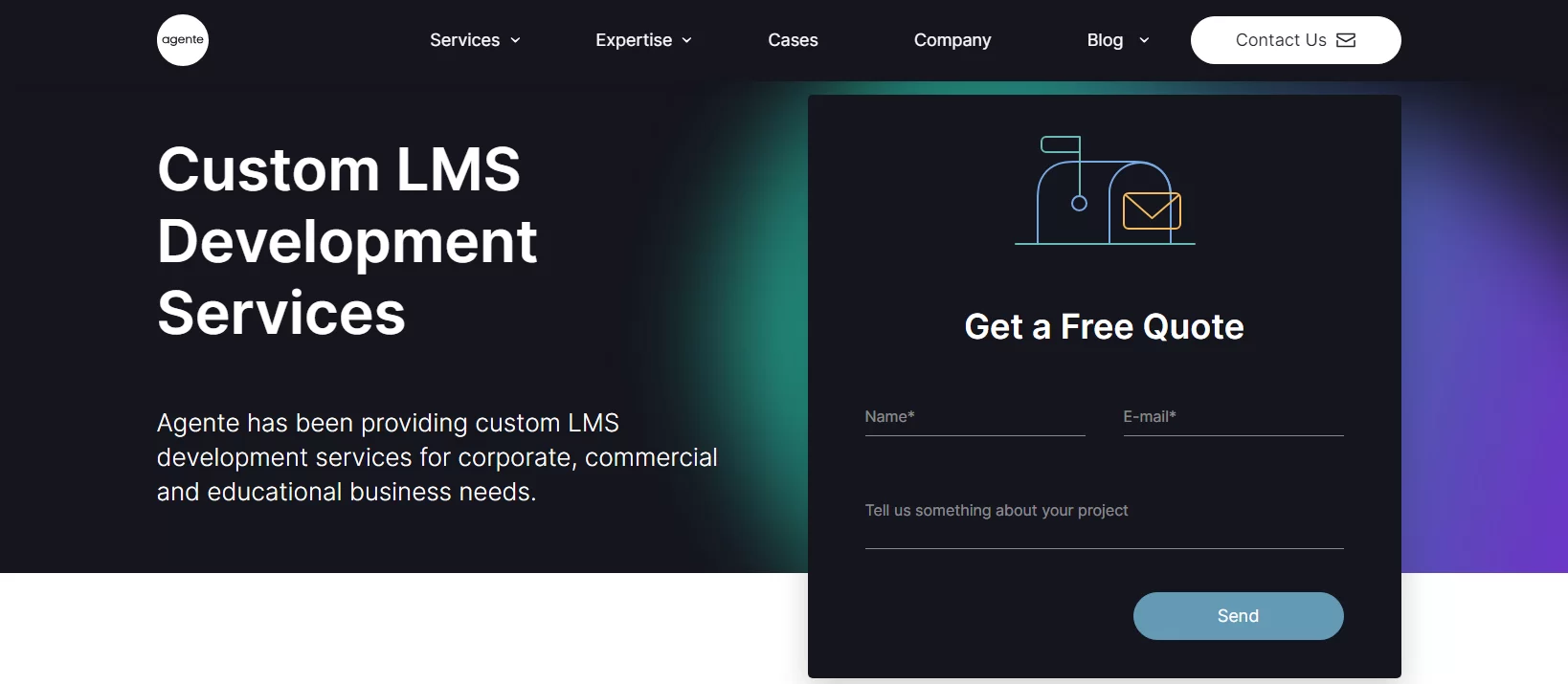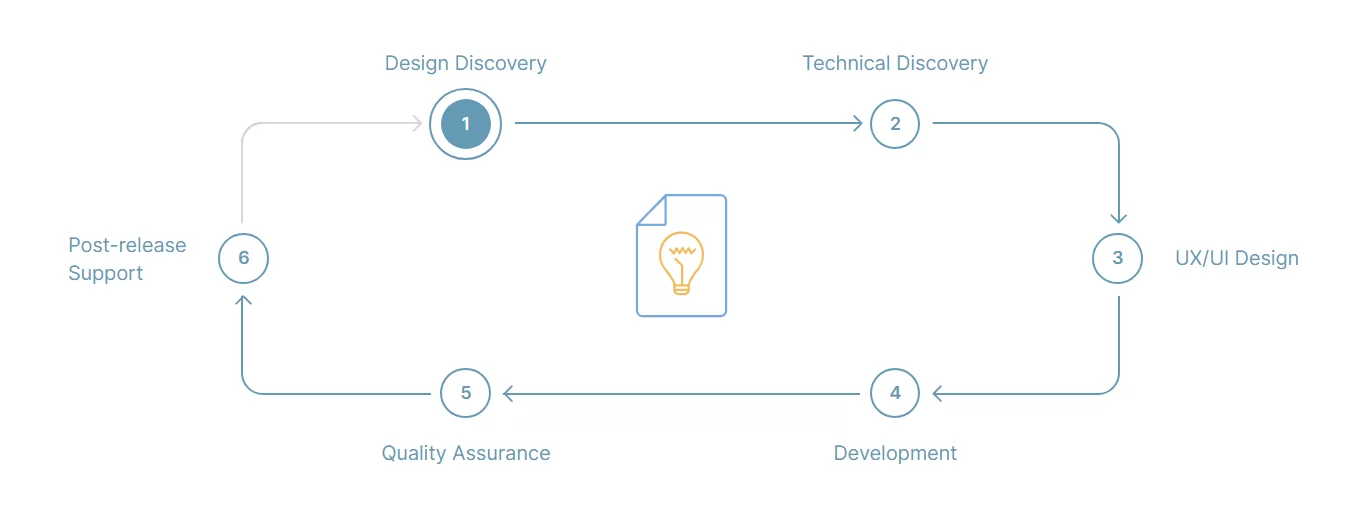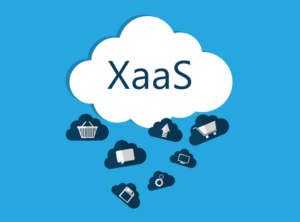How Learning Management System (LMS) Works With Examples
A robust Comprehensive Learning Management System (LMS) like eLeaP can save you time, reduce costs, and increase flexibility. If you are still in doubt about investing in an LMS Development Company, many benefits will convince you of its true potential. However, many organizations have fallen prey to myths and assumptions about these learning management system development agencies.
As a result, they have yet to utilize the system to its full potential. But they are just myths and need to be busted. For instance, the cost incurred on a learning management system should be treated as an expense. Another myth is that LMS is only effective for delivering e-learning content. Or even that you need to buy all the modules in a learning management software application system.
Still, another myth to bust is that managing a learning management system takes time/effort and that switching to a new system is a challenge. As of today, it’s clear to say that all these myths are a bust! On that note, whether you represent a private business, a large enterprise, or an educational institution, LMS Development Services will significantly improve your company’s growth performance.
In the corporate environment, it’s vital to develop a custom Learning Management System for employee training and onboarding that provides complete flexibility and grows in your direction. Ultimately, business developers can create e-learning platforms from essential course-building and management tools to webinars, quizzes and assessments, learning games, and eCommerce features.
What A Learning Management System (LMS) Offers Business
To enumerate, a Learning Management System (LMS) is a software application for the administration, documentation, tracking, reporting, automation, and delivery of educational courses, training programs, or learning and development programs. As a rule of thumb, the learning management system concept emerged directly from the general e-learning and other new material processes.
As you can see from the image above, to help your business managers with the proper selection and implementation process, eLeaP LMS developed a step-by-step plan and a checklist that indicates what an LMS must meet. In other words, a practical, user-friendly, responsive, and successful learning management system helps manage all organizational learning activities and training.
Technically, it’s often used to manage the organization’s administration, documentation, tracking, and learning to report. Consider inviting employees or gaining insight into current or completed training course reports. In addition, an LMS offers a platform for providing online, classroom, and blended training and micro-learning. It also helps to get a grip on the business learning processes.
Related Resource: How A Content Management System (CMS) Works Plus Its Benefits
So, to better understand the function of a learning management system, the image below shows a typical learning landscape within organizations: the learning platform. The learning platform consists of a learning environment with training courses apart from management and administration. For example, eLeaP LMS is a provider that offers an accessible LMS and learning environment.
This is the part in which employees are engaged in learning and development. A portal they log in to and search, book, and follow training courses. The learning experience and the teaching offered are managed in the learning management system: the ‘management and administration system.’ Its offer is collected, and learning activities are tracked and analyzed with reports on learning efficiency.
What Your Workplace Can Do With A Learning Management System (LMS)
In principle, the Learning Management System is intended for an organization’s HR and L&D departments and managers. This applies to all business organizations that want to organize learning and development well and grip training costs, budgets, and training offers. Different roles within the learning management system can be divided into administrator, manager, trainer, and employee.
All the roles mentioned above are related to user privileges on the platform. Generally, there are different types of learning management systems. However, the functionality and applications differ per system. They can be divided into three categories.
The LMS is for (1) online training, (2) classroom training, and (3) a fully integrated LMS. As seen in the four illustrations above, these learning management systems explain all the different uses in detail. Therefore, for those looking at the specific functionalities of an LMS, a few main activities can help guide them during the learning management system implementation, such as follows:
#1: Managing your business employee information
An LMS can be integrated with almost any other HR system, so working with an up-to-date workforce is always possible. To clarify this, an LMS allows employees to be placed in teams. When new employees are added to the system, they can automatically receive an invitation to the online academy. Likewise, an LMS also helps with budgeting the purchase of training.
#2: Managing the ultimate classroom learning offer
The learning offer can also be managed with an LMS. In this way, a learning offer can easily be put together according to your wishes, whereby a combination of online, classroom, and blended training is possible. Some LMSs add microlearning in articles, instructional videos, or case studies. In addition, an LMS facilitates the creation and management of internal or external events.
#3: Managing the actual business operations budget
An essential part of training and education within organizations is the management of training budgets. Budgeting via an LMS allows setting up a personal learning account per employee or team. For your information, an approval route can be linked to perform a budget check (manually or automatically). This prevents budget overruns and provides better insight into expenditure.
#4: Directing learning activities among employees
In addition to technical support and the automation of administrative actions, an LMS can also be used within the HR interview cycle. This is by translating feedback from evaluation interviews into a learning path with appropriate training. Usually, inside the system, HR professionals or managers can create these learning paths and specific learning interventions (such as certification or assessments) and assign them to individuals or teams. The activities and developments can then be monitored, and learning results measured.
#5: Helping you to do various kinds of stuff in style
Equally important, a commendable LMS team will guide you through how to do it in detail. Using their course content creator, you can build thorough courses with chapters, lessons, prerequisites, assessments, and feedback. Then, upload them onto your learning management system. Your employee training or student coursework will be more sophisticated and streamlined than ever!
Tips To Choose The Best Learning Management System (LMS) For Business
In most cases, the exact cost of your learning management system project often depends on the complexity of the project and the number of specialists you hire with us. After you fill in a brief with project requirements, the expert team can get back to you with a ballpark estimate. Notwithstanding, some learning management system companies flexibly adjust each business case’s timeline.
Remember, the concrete terms of educational software development projects can vary from several weeks to months, depending on project needs. Some work with Python, Ruby on Rails, Angular, React, React Native, and other programming languages for optimal project results. In Agente, they can even offer you their own out-of-the-box LMS solution that can be customized upon request.
If you know what an LMS is, how it works, and why you need it, you are ready to choose the best LMS for your organization. An efficient LMS will help you maximize your learning management system (get a free trial), whether premade or custom-built. Be that as it may, to get started, you can sign up and start filling your platform with premium content for your unique business.
Technically, the type of industry you are in will dictate much of the content you use to fill your learning management system. Even within your company, the intended audience will affect your present material. Conversely, any business organization’s human resources department requires different skills than customer service. There are a few ways to make use of these elements.
Consider the following:
- Find the appropriate topic
- Pick a course
- Read About the Course
- Request a preview
In addition, another essential question to consider is, for example, who is included in the decision-making process. Markedly, in other words, the persons influence the chosen LMS and the types of the role they play in the selection process. A logical step is to involve HR in this, but don’t forget the part of the end-user!
Mind you, it is ultimately about the user experience of the HR manager (or administrator) and the learning employee. Once a ‘working group’ has been formed, consider what requirements a learning management system application platform must meet for your organization. Consider this: Are you looking for a SaaS or an Open Source solution? Which functionalities are essential?
Is the learning management system essential for an approval flow for open-line training, or can it also process in-company activity? Using the comprehensive eLeaP content libraries, you’ll find over 600 available courses covering various topics for beginners and professionals. Before building an LMS, let’s look into the primary learning management system types for businesses.
Including:
- Commercial
- Open-Source
- Software-as-a-Service (SaaS)
- Installed
- Integrated
- Non-Integrated
As a rule of thumb, the learning management system implementation process requires high technical expertise; an IT expert manages the integration process with other systems within your enterprise. Next, let’s discover how to build a custom learning management system. Following the step-by-step plan, you can avoid widespread mistakes and create your system from scratch.
Steps To Implement A Learning Management System (LMS)
So, you’ve decided to implement a learning management system. You’ve researched this matter and are sure it will benefit your business. And it indeed might. It might be a waste of money and get you fired. The outcome depends on the implementation process. Remember, the LMS implementation process doesn’t end at the time of the launch. Always look for ways to improve the system.
Also, consider a few other technical implementation methods to help you optimize the content, add more courses, and perfect the user experience for as long as the LMS is in operation. One thing is for sure: Remote learning has become the norm. The global digital education market reached over $300 billion in 2022, with learning management systems comprising almost half of this share.
Since 2019, there has been a rapid increase in users turning to online learning worldwide. Approximately 98% of universities have partially or fully transitioned to online classes, contributing to this trend. In other words, if you consider venturing into learning management system development, now is the perfect time. But how to build an LMS with custom functionality?
About 20% of business ideas in the US prove themselves unviable within the first year. It would be best to validate your idea to avoid unprofitable investments before creating a learning management system. As mentioned, using strategic steps, the high-end Agente Studio provides custom LMS development services for corporate, commercial, and educational businesses.
The Steps:
- Define the purpose of learning management system development. It can be customer training, employee onboarding, retention, salespeople preparation, general-purpose education, etc.
- Articulate the main problems your LMS is to solve. These may include reducing training costs, cutting employee onboarding time, freeing time, measuring learning impact, etc.
- Specify the available budget for LMS development and consider the costs involved.
- Determine the target audience for your LMS project and choose the most appropriate LMS type for them.
- Think about your LMS monetization model – whether it will be freemium or paid.
The benefit of choosing an influential LMS software developer/provider as your go-to learning management application platform is that you can create personalized content. Maybe there is a topic they have not yet covered in their library of courses. Perhaps you want to add your brand to the material. Whatever the reasons, such experts are there for you and support your creative drive!
1. Discovery phase of an LMS development project
Detailed planning is necessary to build an LMS to look and function as requested. At Syndicode, we start the learning management system development with a discovery session. It helps us understand the market need and set the wireframes for the product. For beginner business webmasters, the discovery phase involves various predefined and unique steps, such as data analysis.
For instance, when collecting information, a project manager and business analyst analyze your business goals, needs, and vision. Then, they conduct market analysis to choose the most profitable niche and develop a learning management system strategy. Next, there is the competitor research step or the discovery phase. It allows managers to understand what practices can be used.
As a base for development, not reinventing the wheel speeds up the development process and lowers the system implementation cost. After that, the workplan scope is determined based on your business model, requirements, methodology, and timeline. Using stories, the task is to enable future systems to perform. Developers can make technical specifications and plans.
Lastly, a strategic architecture design plan shapes your idea into a list of components and the principles of their interaction. You get a presentation of the future LMS and can prove the concept while developers identify the possible tech blockers. After the discovery stage, you should understand the learning management system development process and have a rough cost estimate.
2. Pick your system implementation task force
Next, we can start creating a detailed project timeline and also build a prototype. The proper technology stack is critical for creating a learning management system that is stable, smooth-running, and secure. Markedly, the process likely touches on several operations within your organization. Plus, it helps oversee the implementation process while connecting team members from various hubs.
Such as human resources, IT, and learning and development. Bring those individuals on the team if your learning management system works with external partners, such as channel partners or contractors. However, experts advise keeping the team as small as possible to ensure the LMS implementation process remains highly focused. After you assemble the team, give individual roles.
For example, the team leader helps oversee the overall learning management system implementation to completion, working directly with the system vendors and dealing with any issues. The project manager tracks all milestones in the implementation process to meet all deadlines. Remember, your legacy training platform may also often contain many eLearning tools and courseware.
On that note, the eLearning specialist supervises the transfer or development of content to the new system during the implementation process. An individual administrator oversees the L&D program. They help ensure that the learning management system matches your crucial business/organizational goals through the course structure, certification, compliance, and user reports.
2. Establish a strategic implementation plan and timeline
An effective Learning Management System integration must have a strategic LMS Implementation process. The preferred platform partner works closely with your team members to actualize the best results. Open communication between your team and your partner is critical. Essentially, this ensures that the wholesome implementation process coordinates with your actual business goals and happens within your timeframe.
Usually, how long the implementation process takes depends on which type of system you choose. An on-premises system installed on your server may take longer than a hosted or cloud-based system in which they are housed on the vendor’s server. Still, the learning management system application platform vendor or your IT department can provide a better estimate of the period.
The number of user accounts and software programs you intend to migrate into and integrate with the LMS also impacts the LMS implementation timeline. Be realistic in your timeline and budget enough time to meet each benchmark before the launch. In most cases, a strategic learning management system development 0plan involves a variety of innovative system design technologies.
In that case, it’s worth noting various elements, such as the backend, frontend, databases, and hosting environments. For instance, front-end development is where the system data is stored and processed. By all means, this learning management system software layer is invisible to the client, yet it is the backbone of the successful learning management system implementation process.
The popular frameworks for building a system backend are Django, Rails, Node.js, and others. Our agency heavily relies on Ruby on Rails for custom development from scratch using various techniques.
Including:
- Frontend: Everything a user can see and interact with within a product. To create an LMS interface, we use Vue.js or React.js. As per requirements, we chose the technology to give the desired appearance, quick loading, and high responsiveness.
- Databases:
- Hosting: Amazon Web Services is the perfect blend of security, productivity, and pricing for cloud-based learning management system development. Alternatively, DigitalOcean is a fast and reliable hosting service.
Technically, you’ll need many tools and programming languages to create an LMS from scratch. Our skilled technicians select the technology that can best fulfill your unique requirements. Eventually, our agency has many libraries that allow extra flexibility and help write code faster. In addition, it also comes with solid safety measures and is suitable for most industries.
3. Prepare your business workforce for data migration
In layman’s language, most learning management systems are connected to relational databases such as PostgreSQL or MySQL Database and other rationals. They are compliant, reliable, and fast. The reason why most businesses use PostgreSQL is due to its significant functions. Use a Python Programming Language to create an effective and efficient learning management system interface.
Specifically, you may consider utilizing programming languages such as React.js or Vue.js. As per requirements, ensure you choose the proper technology to give the desired appearance, quick loading, and high responsiveness.
As mentioned, an on-premises LMS installed on your server may take longer than a hosted or cloud-based LMS in which the system is housed on the vendor’s server. The LMS vendor or your IT department can provide a better estimate of the period.
The number of user accounts and software programs you intend to migrate into and integrate with the LMS also impacts the LMS implementation timeline. Be realistic in your timeline and budget enough time to meet each benchmark before the launch. Whether transitioning from a legacy LMS or implementing an LMS for the first time, focus on crucial decision centers.
More so on which courses, data, and instructional assets will be transferred to the new system. Transfer only those courses and data necessary for the upgraded LMS and archive the remainder. Check with your legal department to see which files must be kept. Remember, the course completion schematics and records of prior learning fall into that category.
If you’re switching from a legacy LMS to a new one, have your IT expert review your instructional assets to ensure they can be integrated within the new LMS. Even if SCORM compliant, the courses may need adjustments to work in the new system.
4. Make an internal trial run and offer training
Before completing and launching the Learning Management System Implementation Process, we recommend testing the new system among handpicked users. As well as internal staff or extended enterprise users such as channel partners or contractors. Prepare a test case your administrators and users can run through for the preliminary system trial. Document any issues that crop up.
Then, report those issues to the team members and the LMS vendor. Then, offer a training program to your internal users and external partners who will utilize the LMS. This training can be delivered via a webinar or in-person instruction. Again, your LMS vendor provides guidance on which training options are available (make sure to find out if extra fees are involved).
Also, formulate an LMS implementation rollout plan with your LMS vendor during this period. Alert all stakeholders—perhaps via an email campaign—about the launch and when it will happen.
5. Switch to the new learning management system
Now that you understand the purpose of learning management system development and have balanced out the features list, you may make a few specifications or switch to a new learning management system. After all the requirements are set and recorded on paper, designers visualize the future LMS. For complex architectures, they first create LMS mockups and wireframes.
If everything looks good, they make UI and transfer it to developers to make it a functional product. As one of the final steps in the LMS implementation process, switching to the new LMS can be accomplished in several ways.
Consider the following:
- First, ensure a complete changeover is done overnight.
- Secondly, make a gradual phase-out of the old LMS and phase-in of the new system.
- Or, instead, run both systems in parallel before the changeover.
In any case, alert your colleagues of any blackout period between when the old system goes offline and when the new LMS is live. Discuss with your service provider and team the best learning management system switchover per your needs.
Some experts advise running both systems parallel to preserve data integrity and make users more comfortable with the new system. Once data is secure and all parties are ready, switch to the new learning management system application platform entirely.
Start Assessing Your Learning Management System Data
At all costs, a hand-picked in-house development team has substantial benefits, like complete control and direct communication. Usually, these factors are the more crucial for learning management system development, the bigger the project and the longer the development process. Yet, assembling an in-house development team takes substantial time for interviewing and training.
It is also associated with higher costs than outsourcing since employing people is a long-term investment to fulfill a constant flow of tasks. Once the LMS implementation process is complete and when the new system has been in operation for some time, review how the process went for all involved. Pinpoint any technical glitches that may have hampered the launch and correct those.
Additionally, conduct various evaluations as you wrap up your learning management system implementation. For instance, assess how many users logged onto the system and how they progressed through it. Also, ask yourself a few questions as per the project. Such as follows: Did they complete the courses? How did they score? And much more significant business-driven questions.
Resource Reference: The Topmost Best 19 Learning Management Systems With Examples
Scores and user satisfaction don’t tell the entire story of how well the LMS performed regarding organization goals. Initially, such stats provide insight into the technical performance of the LMS, including page uploads, time to upload, and overall user experience. So, how to create an LMS if you don’t have an in-house team? Outsourcing can be a cost-effective option for one-time projects.
In most cases, the main reason is that you only pay for the work without any long-term investment. However, outsourcing comes with risks, such as communication issues, lack of planning, and poor quality control. You must hire an outsourcing company with honed processes, clear communication, pre-development business analysis, and repeated testing to prevent these issues.
Some Notable Challenges That An LMS Platform Helps Solve
By all means, the main goal of an effective Learning Management System (LMS) is to get a grip on learning processes, budgets, and cost optimization in business. Why is that so important today? The main reason is that the innovative capacity is strongly determined by the extent to which the knowledge and skills of employees move along with the increasingly rapid developments in the market.
HR and L&D face the challenge of showing employees the need for continuous personal development and generating employee engagement. A good LMS facilitates all these tasks. At the same time, it helps guide employees in their careers, which can be done by linking learning to the required skills and employees’ ambitions. This makes it easy to manage learning activities.
Related Topic: CRM | Why A Customer Relationship Management (CRM) Matters?
It also offers the right balance between free choice and compulsory training. In addition to motivating and encouraging employees, HR and L&D are also expected to justify how their expenditure contributes to knowledge development within the organization. This is partly due to the growing demand for training, increasing investments, and the increased available offers and learning forms.
This requires reports to grasp the training house and its costs better. Management expects reports that provide insight into the learning efficiency within the organization. With an LMS, you have the correct accounts and insights quickly. But how do you choose the LMS that perfectly fits you? As we’ll elaborate, when you consider investing in an LMS, there are numerous factors to remember.
1. Set your goals and expectations
Before comparing the numerous LMSs in the market, you must set your expectations and goals. Analyze your needs. What are the skill sets that you wish to improve? What is the outcome you expect? Who is your target audience? Move ahead only when you have clear answers to all your questions.
2. List out the features you need
There is a wide range of crucial elements that you can choose from. You need to narrow the list down to the top few components that are important for you. Some features that might interest you include assessment quizzes, discussion forums, robust security, automated notifications, etc. Prioritize the list and shortlist the LMS vendor on that basis.
3. Figure out how many support services you need
You need to decide on the kind of support services that you need. Some organizations need minimal support from the vendor. Others will need regular handholding. You need to check with your vendor on the kind and frequency of support services they have.
4. Keep the technical limitations of the audience in mind
Your employees may not be tech-savvy or technologically progressive. Whatever it is, you need to keep this factor in mind, as it will determine the kind of activities and multimedia you can use for your course. You have to choose an LMS that supports the activities.
5. Comply with learning management systems standards
Once it is clear what requirements a Learning Management System must comply with, several learning management systems have been examined. After that, the next step is to explore the implementation process. The purchase is only a tiny part of the entire process. The implementation process stands or breaks the adoption.
Summary Notes:
As soon as the testing proves every feature works as requested by the client, the code is deployed. To prevent delays, we use the Systems Development Life Cycle (SDLC) method. Also, before the big day, the Web Tech Experts team prepares a detailed guide of the LMS features and how to operate them. We offer corrective and perfective maintenance services as the process is over and running.
As you monitor the LMS performance and collect user feedback, you can request fixes and changes. It’s impossible to name an exact custom Learning Management System (LMS) cost since it depends on many factors. But to give you some reference, let’s say MVP development for an average web-based LMS takes around four months. The average contractor rate is between $40/70 per hour.
Related Resource: How A CRM Software System Works | Wonder What’s Next?
By all means, using a carefully selected LMS developer will be your better choice. With that in mind, once you are set up to start using eLeaP, you must first identify with what content you will train your employees. Don’t worry; their team makes it all easy for you. Using their learning management system, you can consider a couple of options. Then, settle for the best LMS features.
In that case, you can always utilize their vast material collection or create custom, personalized content. That said, you can learn more about how to get started in detail. However, given the ever-evolving cloud computing technology, if you need more information, you can always Contact Us and let us know how we can sort you out. You can also share your thoughts or questions in our comments below.
NB: Some of our content sources are Syndicode, Web Tech Experts, and Agente for informative uses.





